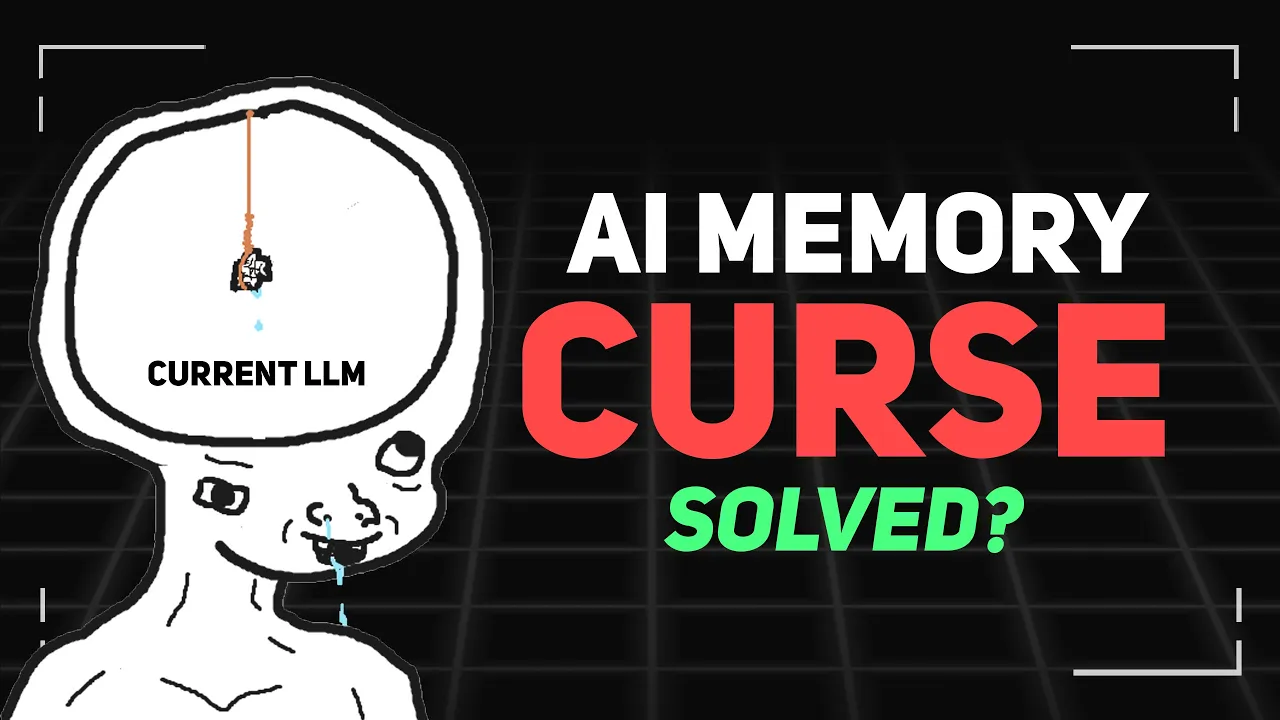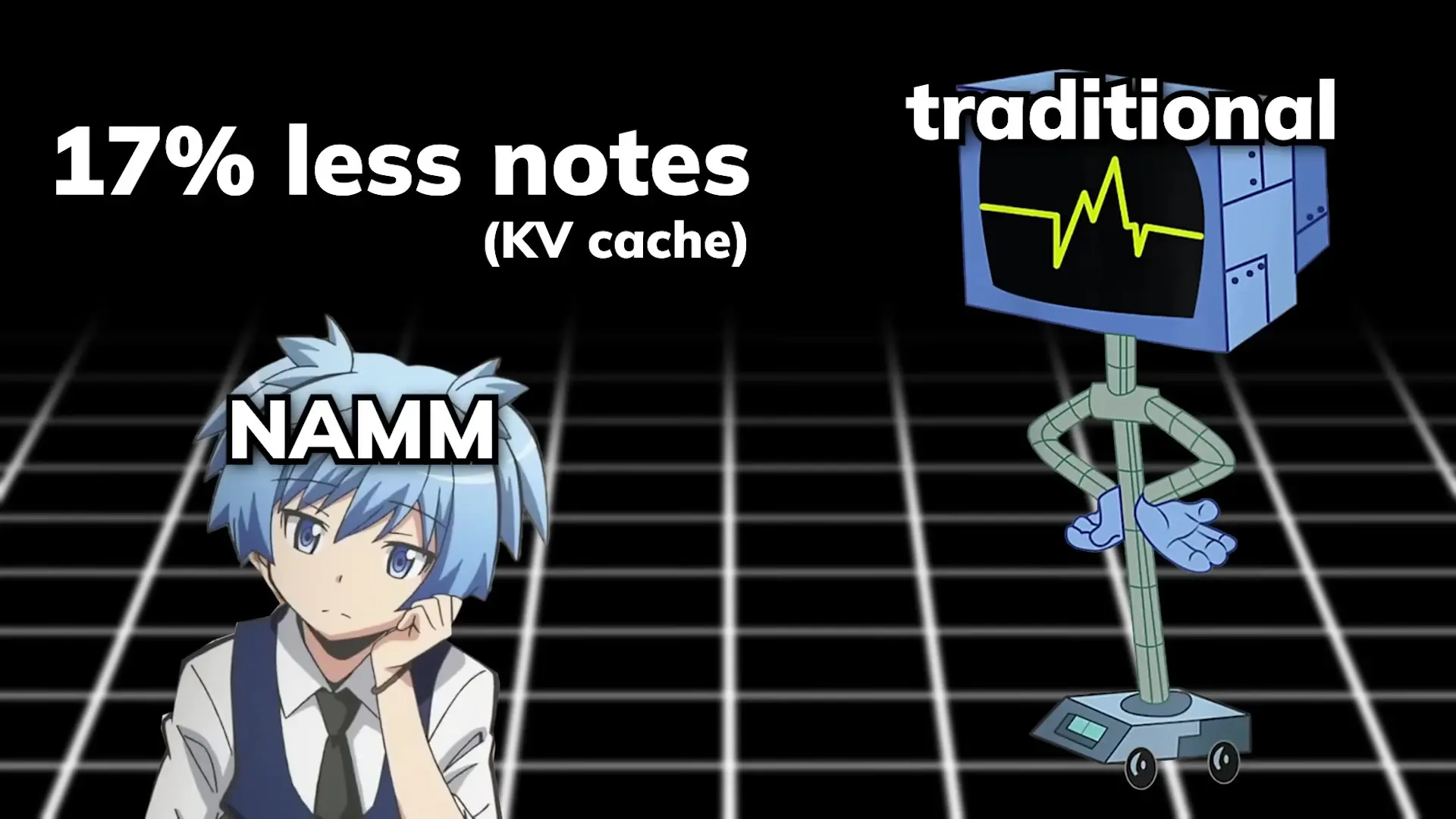
Large language models face a fundamental challenge: they need sufficient context to properly understand and respond to queries. Whether it's referencing an entire codebase or documentation that spans millions of words, LLMs require this information to generate accurate, helpful responses. While context windows have gradually increased across different models, we're beginning to hit walls of diminishing returns—even when information fits within the context window, models can still forget details or hallucinate responses.
The Context Window Challenge
Researchers have explored various mechanisms to address these memory limitations, but the attention mechanism within Transformers—which powers today's leading AI models—remains superior in terms of performance. Most practical approaches have pivoted toward storing memory externally through techniques like Retrieval-Augmented Generation (RAG), but these methods heavily depend on selection pipelines to identify the right documents to feed into the context window.
The cutting edge of memory improvement has now shifted toward enhancing the architectural design around attention itself. Three innovative research papers offer promising approaches at different scales, potentially accelerating AI capabilities significantly in the near future.
Approach 1: Adaptive Note-Taking with ANS
The first breakthrough comes from Sak AI with their Adaptive Note-taking System (ANS). Rather than remembering everything systematically, ANS learns to evolve with training data—similar to how a skilled student takes notes during a lecture.
Think of traditional approaches as a computer taking notes using predetermined algorithms—removing spaces between words or skipping words over a certain length when space runs low. As content grows, these rigid rules might result in unusable abbreviations like writing only the first letter of each word.
In contrast, ANS functions like a student who actively learns what's important. It identifies core ideas, key arguments, and crucial examples while filtering out redundant words, unimportant side comments, and unnecessary tangents. This system wasn't born knowing how to take good notes—it developed these skills through training, receiving rewards when its notes helped achieve good results.

Technically, ANS is a 4,000-parameter model attached to the attention mechanism during training. It learns to identify important information and can reduce 75% of the KV cache for LLaMA 3-8B models—meaning it uses 75% less space compared to systematic approaches. Remarkably, it can be re-attached to different model types while maintaining performance, reducing notes by up to 77% with no performance loss.
Approach 2: Memory Layers at Scale
While ANS improves note-taking efficiency, it doesn't address the fundamental limitation of having a single context window. Meta's research on Memory Layers at Scale approaches this differently, giving our note-taking student an additional tool: a specialized flashcard system alongside regular notes.
If ANS improved the note-taker, Memory Layers improve the medium itself—transforming Transformers' dense layers to provide space for core concepts, reasoning, and information flow. While these components are crucial for conceptual understanding, they're computationally expensive to process.

Memory layers function like a flashcard system storing facts, with each card having two sides: a key and a value. What makes this system special is that it's trainable and self-organizing during training. As the model processes more data, the flashcard system automatically creates and refines key-value pairs. Since the keys are indexed, retrieving specific facts is much faster than searching through detailed notes, making this process computationally efficient.
Why not convert all notes to flashcards? Because flashcards excel at factual retrieval but struggle with versatility. Regular notes can contain more than just facts—they capture reasoning processes and complex ideas that don't fit neatly into key-value pairs. Research shows the optimal approach is replacing one in every eight dense layers with memory layers, doubling accuracy on factual benchmarks while using less compute through sparse activation.
Approach 3: Google's Titans Architecture
Google's research proposes the most radical architectural change, inspired by the human brain. The Titans architecture differentiates between three types of memory: short-term, long-term, and persistent.
- Short-term memory functions like the notes a student takes during a lecture
- Long-term memory resembles flashcards but with an important difference: a "surprise mechanism" that prioritizes unexpected or contradictory information
- Persistent memory stores reasoning skills and abstract ideas that don't need updating during inference—similar to how you wouldn't try to improve your handwriting during a lecture
The long-term memory's surprise mechanism actively seeks out information that contradicts prior understanding, creating an intelligent forgetting mechanism rather than simple decay. This makes the system more receptive to updates like changes in factual information (current year, weather conditions, etc.).

Google's researchers proposed three ways to combine these memory types when generating outputs:
- Memory as Context (MAC): Quickly references flashcards and background knowledge before answering, but doesn't necessarily use them in every response
- Memory as Gate (MAG): Directly incorporates flashcard information alongside notes in responses
- Memory as Layer (MEL): Primarily relies on flashcards to generate answers
These approaches prioritize flashcards at different levels, with MAC performing best overall, MAG excelling at parallel processing, and MEL showing less impressive results.
Breaking Through Context Window Limitations
The most remarkable achievement of Google's Titans architecture is its ability to handle context windows exceeding 2 million tokens with ease. It outperforms existing decoder-only models in 1-million-token context windows with 94% accuracy. Even more impressively, it can extend to a 10-million token context window—unprecedented in the field—while maintaining 70% accuracy in tasks like finding specific sentences within text equivalent to the entire Harry Potter series multiplied by ten.
With the largest Titan model containing only 760 million parameters, this architecture represents a potential evolution for Transformer models. As attention mechanisms remain crucial to LLM success, these architectural innovations may provide the breakthrough needed to overcome current memory limitations.
The Future of AI Memory
These three approaches—ANS's adaptive note-taking, Memory Layers' flashcard system, and Google's Titans architecture with its human-inspired memory types—represent significant advancements in addressing LLMs' context limitations. While each offers unique benefits, Titans' ability to handle 10-million token context windows while maintaining strong performance suggests we may be approaching a new era in AI capabilities.
As these architectures mature and scale, we can expect AI systems that can reference, comprehend, and reason across massive amounts of information—potentially transforming how we interact with and leverage artificial intelligence across countless domains.
Let's Watch!
How Google's Transformer 2.0 Solves LLMs' Memory Problem
Ready to enhance your neural network?
Access our quantum knowledge cores and upgrade your programming abilities.
Initialize Training Sequence